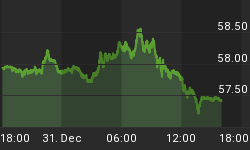The following is excerpted from a commentary originally posted at www.speculative-investor.com on 23rd February 2014.
An interesting aspect of the gold market is that most analysis is off track, with the reasons put forward for being bullish generally being further off-track than the reasons put forward for being bearish. That's despite gold bulls having the long-term price trend and fundamentals in their favour. The problem is that most gold bulls pay scant attention to the real fundamental price drivers and focus on things that don't matter. A good example is the current focus on the possible reduction in annual gold production stemming from the combination of rising costs and last year's decline in the gold price.
The idea that a potential decline in annual gold production is an important reason for being bullish on gold is so far off track and reflects such a basic misunderstanding of price formation in the gold market that any analyst who promotes this idea should be ignored. As we've explained many times, the gold-mining industry adds a tiny percentage (about 1.5%) to the total supply of gold each year. This means that if the mining industry's annual production were to fall by 10%, the effect on the total supply of gold over the course of a year -- and, since supply and demand are always equal, the effect on the total demand for gold over the course of a year -- would be about 0.15%. This is trivial.
Note that gold is the only commodity for which changes in current production will never have a significant effect on the price trend, although we hasten to add that for the same reason (the high level of the existing above-ground supply relative to new mine supply) the effect of annual production changes are also generally small enough to be ignored when analysing silver's prospects.
Another example of the bad analysis that permeates the ranks of gold bulls is the idea that gold demand can be determined by adding up the flows of gold between different parts of the market. Such flows include the transfer of gold from coin dealers to the general public, the transfer of gold from outside to inside China, the transfer of gold from bullion ETFs to other holders, and the transfer of gold from commercial traders to jewellery buyers in India. For every buyer there must always be a seller, so adding up the quantity of gold bought during a period will generally tell you nothing about why the gold price did what it did in the past or what the gold price will likely do in the future.
The fact is that the total demand for gold will always be equal to the total supply of gold, which will always be equal to the total aboveground gold inventory. The demand for gold was equal to the total aboveground gold inventory when the price was peaking at $1920 in 2011 and it was equal to the total aboveground gold inventory when the price was bottoming at $1180 last year. What, then, determines the price?
The price is not determined by the volume bought/sold; at the most basic level, it is determined by the relative desires of buyers and sellers to change their current positioning. If buyers are more motivated than sellers, the price will rise. If sellers are more motivated than buyers, the price will fall. Both a price rise and a price fall could occur on either rising or falling volume.
Consequently, what gold-market analysts should do is concentrate on the factors that influence the motivation to hold gold. This generally means concentrating on macro-economic factors such as real interest rates, credit spreads, the yield curve, inflation expectations, and the health of the banking sector. Strangely, gold bears are often better at this than gold bulls. The gold bears are currently not interpreting the economic backdrop correctly (most of them wrongly believe that a real recovery is underway), but at least they are looking for clues in the right places.
If you are bullish on gold you are almost certainly going to be right over the next few years, regardless of how spurious your reasoning happens to be. Being bullish for the right reasons will only matter when the long-term bull market is near its end.
We aren't offering a free trial subscription at this time, but free samples of our work (excerpts from our regular commentaries) can be viewed at: http://www.speculative-investor.com/new/freesamples.html
















